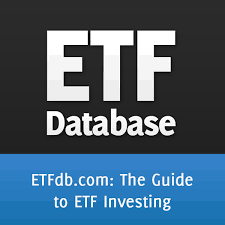MarketsMuse.com ETF update is pleased to share an informative perspective about best practices and “best execution” that institutional investment managers, RIAs and others should consider when using ETFs, courtesy of insight from one of the more widely respected members of ETF “agency-only” execution space. Here’s the excerpt of the ETFdb.com interview:
 All walks have come to embrace the exchange-traded product structure as the preferred vehicle when it comes to building out low-cost, well diversified portfolios. Furthermore, active traders have also taken note of the inherent advantages associated with the ETF wrapper, embracing the product structure for its unparalleled ease-of-use and intraday liquidity.
All walks have come to embrace the exchange-traded product structure as the preferred vehicle when it comes to building out low-cost, well diversified portfolios. Furthermore, active traders have also taken note of the inherent advantages associated with the ETF wrapper, embracing the product structure for its unparalleled ease-of-use and intraday liquidity.
ETFdb.com recently had the opportunity to talk with Mohit Bajaj, Director of ETF Trading Solutions at WallachBeth Capital, about his firm’s role in the industry as well as the evolution of ETF trading in recent years.
ETF Database (ETFdb): What’s your firm’s story? What role do you play in the ETF industry?
 Mohit Bajaj (MB): Our firm was founded in 2008 by brokers and specialists with experience trading ETFs since their inception. Over the years, our ETF Trading Solutions group has become the largest agency-only desk in the industry, and we have transformed the way that institutional investors trade ETFs, offering transparency and significant price improvement in the ETF space. Our goal has always been to educate the larger buy-side and institutional investor community about the nuances of the ETF wrapper and how to achieve the best execution in their ETF trades.
Mohit Bajaj (MB): Our firm was founded in 2008 by brokers and specialists with experience trading ETFs since their inception. Over the years, our ETF Trading Solutions group has become the largest agency-only desk in the industry, and we have transformed the way that institutional investors trade ETFs, offering transparency and significant price improvement in the ETF space. Our goal has always been to educate the larger buy-side and institutional investor community about the nuances of the ETF wrapper and how to achieve the best execution in their ETF trades.
Our process is centered on the partnership we build with our clients. This involves extensive consultation and analysis of the best way to trade a particular name. For our institutional client base, that can mean getting risk pricing for larger blocks, taking advantage of the creation/redemption process, or some combination of the multiple liquidity avenues we provide to our clients.
We’ve tried to stay ahead of the curve by being an educational resource for our clients, whether that means offering an introduction to ETFs for new adopters, or having an in-depth conversation about the granular aspects of ETF trading.
ETFdb: There is a growing interest in ETFs from participants who previously only looked at derivatives. Can you please discuss the common ground between ETFs, futures and swaps?
MB: Because of increased government scrutiny, many firms are moving away from the use of swap and derivative products. It’s becoming more expensive from a balance sheet perspective to enter into many of these types of products (i.e. initial margin requirements, etc.). As an alternative, fund managers have begun using ETFs as a way to gain similar exposure. Trading an S&P ETF, such as (SPY A), instead of trading S&P minis is a great example of this strategy, which allows for similar exposure without the hurdles that come along with derivative trading.
ETFdb: When it comes to ETF trade execution, what is the single biggest mistake that institutional investors tend to make? How can this be avoided?
MB: The biggest misconception among institutional investors is that thinly traded ETFs cannot be bought or sold at a tight price because there is no liquidity in the secondary market. For many funds, this is completely untrue. The majority of ETFs have very liquid underlying securities, which can make pricing in the primary market very tight; if the underlying names are trading tightly, one can expect the ETF to reflect the same tight spread.
For the entire Q&A courtesy of ETFdb.com, please click here

